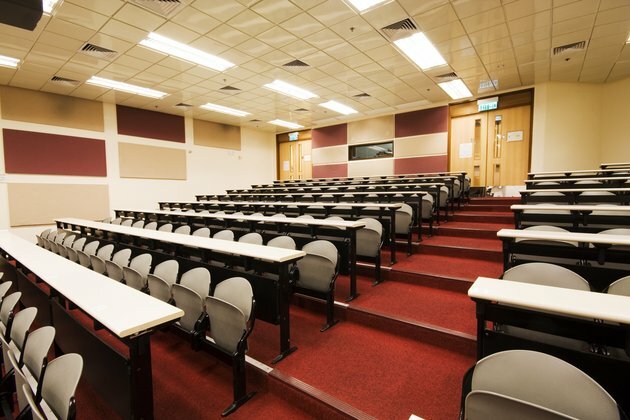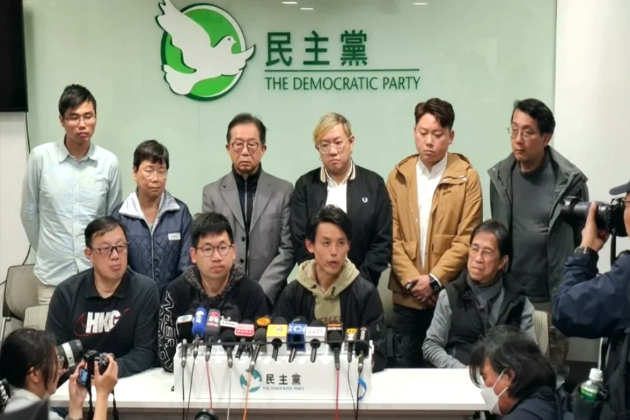Online lectures mean fewer students are turning up - does it matter?
The Conversation
24 Feb 2020, 01:50 GMT+10

In 2017, a business lecturer posted a photo on LinkedIn showing a completely empty university classroom, 15 minutes after the class had been scheduled to start.
This is not an isolated incident. Anecdotally, lecture and tutorial attendance has been declining steadily in Australian universities and faculties for many years.
Declining attendance may affect students' academic performance and their sense of connectedness. University doesn't only teach content but develops attributes such as oral communication and interpersonal skills including teamwork.
Students are less likely to develop these skills if they don't physically attend class.
We conducted a large-scale study in our law school to uncover whether lecture recordings are responsible for declining student attendance and what motivates students to attend or miss class.
By manually counting how many students were in lectures across sixteen different subjects, we found attendance rates averaged just 38% of total enrolments across the semester.
There was a natural ebb and flow of lecture attendance throughout the semester. There was peak attendance at the beginning (57%), a significant drop in the middle as assessments became due (26%) and a rebound at the end of semester as exam season hit (35%).
We also asked students to self-report their lecture attendance. The most common answer given, by far, was "almost all of the time" and 59% of students said they attended lectures the majority of the time.
Clearly there is a dissonance between this self-perception and reality.
Are recordings to blame?
Lecture recording is now common in Australian universities. Anecdotally, it's often held responsible for declining attendance rates. But there is little research on the relationship between student attendance and lecture recording.
While lectures are usually recorded and available to students in streamed or downloadable format once the class ends, tutorials and other smaller classes are not usually recorded.
Read more: Are lectures a good way to learn?
Our study found students aren't ditching tutorials, seminars and workshops as much as they are lectures. Tutorials averaged a whopping 84% attendance rate. This could partly be explained by the fact teachers assess students on their participation in tutorials.
We also surveyed 900 students to find out their reasons for attending and not attending lectures, tutorials and workshops.
Availability of lecture recordings was the most common reason students gave for not attending lectures (18% of students said this). But work commitments were a close second (16%). Then it was timetable conflicts (12%), the time and day of lectures (11%) and assessments being due (8%).
Students lead complex lives
Universities provide students with lecture recordings for several reasons. These include giving students an alternative study tool and supporting students with disabilities or from non-English speaking backgrounds (who can slow down or pause recordings if necessary).
Our survey and focus groups showed students lead complex lives often balancing work, family and other commitments alongside their studies.
One student said:
Other students said they relied on lecture recordings to enhance their learning. One said:
Some students with additional learning needs said the option not to attend class, and to access lecture recordings, was an important equity measure.
What should we do?
Lecture recordings bring important benefits for students. They can also be necessary for students with personal, work or health difficulties.
But recordings are clearly contributing to declining lecture attendance, too. We propose three possible paths forward for universities and teachers, each with their own advantages and disadvantages.
First, we can simply persist with the traditional model of recorded lectures. Teachers will need to accept attendance will likely be low and student learning, experience and wellness should instead be the focus of tutorials and other small group classes.
Second, we can introduce more active learning into lectures to encourage greater attendance. This could include small group exercises, in-class polling or role-plays.
Read more: Let's not abandon the humble lecture quite yet
But this would mean lecture recordings would be less useful for students. It would undercut the flexibility recordings offer and may cause equity concerns.
Third, we can change our teaching methodology to a "flipped" approach. This means the main way students would get information would be through online resources and activities. Face-to-face classes would then be dedicated to engaging students in deeper learning through collaborative activities.
Though this frees up lecture time for more effective learning, it would require appropriate support and training for teachers. Teachers, many of whom already work under significant time constraints, would need to invest more time and energy into their lessons.
Unfortunately there is not a one-size fits all answer to the conundrum of declining lecture attendance. But learning and teaching policies, such as mandatory lecture recording, should be informed by an evidence-based understanding of the likely consequences for staff and students.
Authors: Natalie Skead - Professor, Dean of Law School, University of Western Australia | Fiona McGaughey - Senior Lecturer, Law School, University of Western Australia | Kate Offer - Lecturer in Law, University of Western Australia | Liam Elphick - Adjunct Research Fellow, Law School, University of Western Australia | Murray Wesson - Senior Lecturer in Law, University of Western Australia 
 Share
Share
 Tweet
Tweet
 Share
Share
 Flip
Flip
 Email
Email
Watch latest videos
Subscribe and Follow
Get a daily dose of China National News news through our daily email, its complimentary and keeps you fully up to date with world and business news as well.
News RELEASES
Publish news of your business, community or sports group, personnel appointments, major event and more by submitting a news release to China National News.
More InformationBusiness
SectionU.S. stocks end trading week mixed as investors break for Easter
NEW YORK, New York - U.S. stocks were volatile again Friday as President Donald Trump blasted Federal Reserve chair Jerome Powell for...
Eurozone drops official interest rates by quarter-percent
BRUSSELS, Belgium - The Europesn Central Bank has slashed official interest rates in the wake of the financial crisis triggered by...
Feds order safety fixes after Keystone oil spill in North Dakota
BISMARCK, North Dakota: Federal officials have ordered the company running the Keystone Pipeline to take several safety steps after...
US tariffs put pressure on India’s shrimp exports
GANAPAVARAM, India/GUAYAQUIL, Ecuador: India's shrimp exporters are facing mounting uncertainty as new U.S. tariffs threaten to disrupt...
U.S. stocks, dollar continue to be crushed by Trump tariiffs
NEW YORK, New York - Technology stocks fell sharply Wednesday, dragging down the industrial sector in its wake, as Donald Trump's trade...
Trump firm against Nippon Steel’s $15 billion U.S. Steel Deal
ABOARD AIR FORCE ONE/TOKYO: U.S. President Donald Trump reaffirmed his opposition to a foreign takeover of U.S. Steel, casting renewed...
Asia Pacific
SectionAustralian lawmakers hunt alleged criminal from Ireland
The Australian Federal Police (AFP) are appealing to the public for assistance in locating Michael Connors, a 25-year-old Irish national...
Trump firm against Nippon Steel’s $15 billion U.S. Steel Deal
ABOARD AIR FORCE ONE/TOKYO: U.S. President Donald Trump reaffirmed his opposition to a foreign takeover of U.S. Steel, casting renewed...
Hong Kong’s last major opposition party moves to dissolve
HONG KONG: Hong Kong's last major opposition party has begun the process of dissolving, a symbolic end to decades of pro-democracy...
Japan eyes stronger yen ahead of US trade talks
TOKYO, Japan: As Japan prepares for critical trade talks with the United States, a top policymaker has stressed the need to strengthen...
China, EU talks could pave the way for price resolution
BERLIN, Germany: Talks between the EU and China could pave the way for a shift from tariffs to minimum price agreements on Chinese...
Tesla stops China Orders for US-made models amid trade tensions
BEIJING, China: Tesla has halted new orders in China for its two U.S.-made premium models as trade tensions between Washington and...












